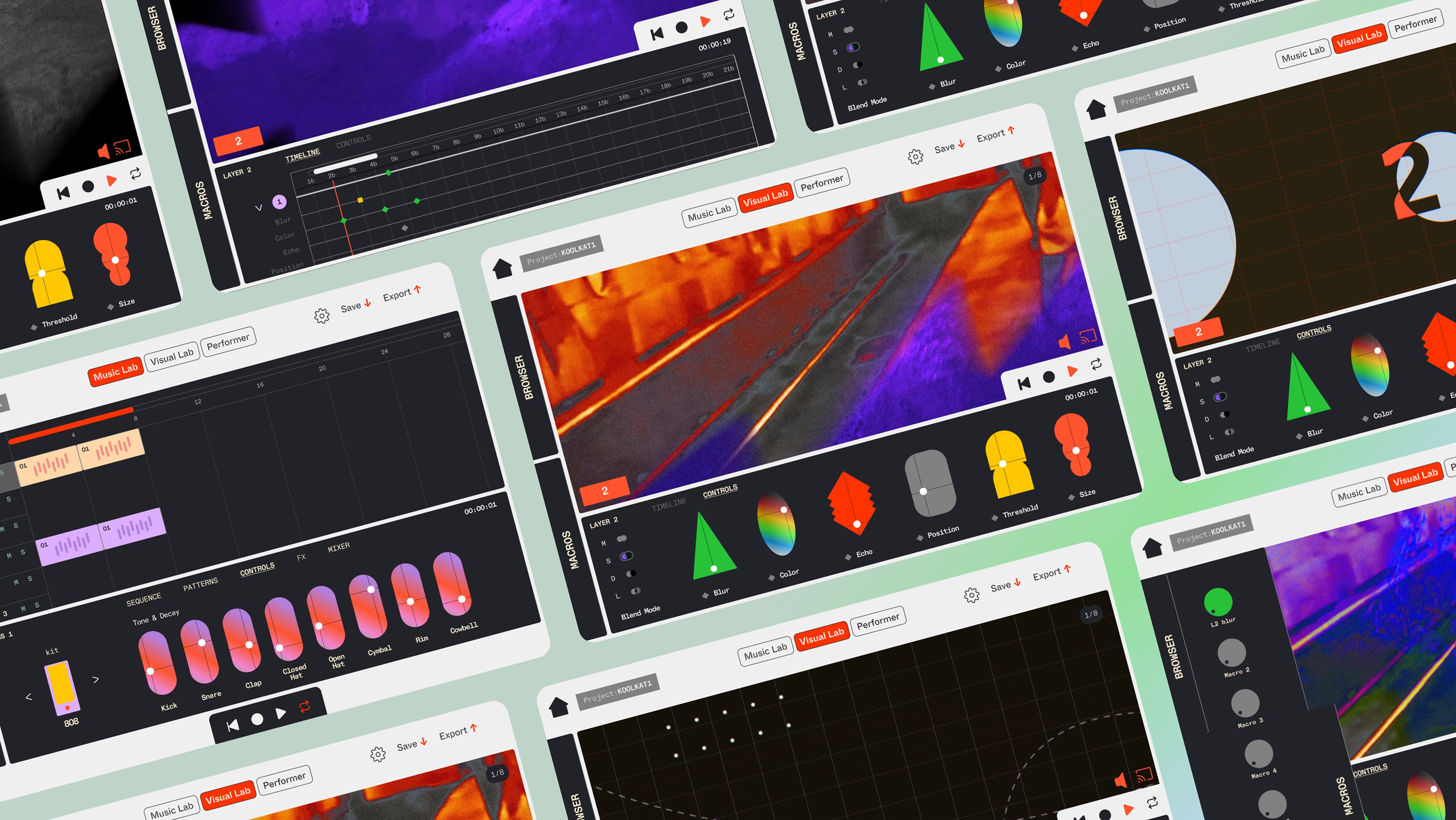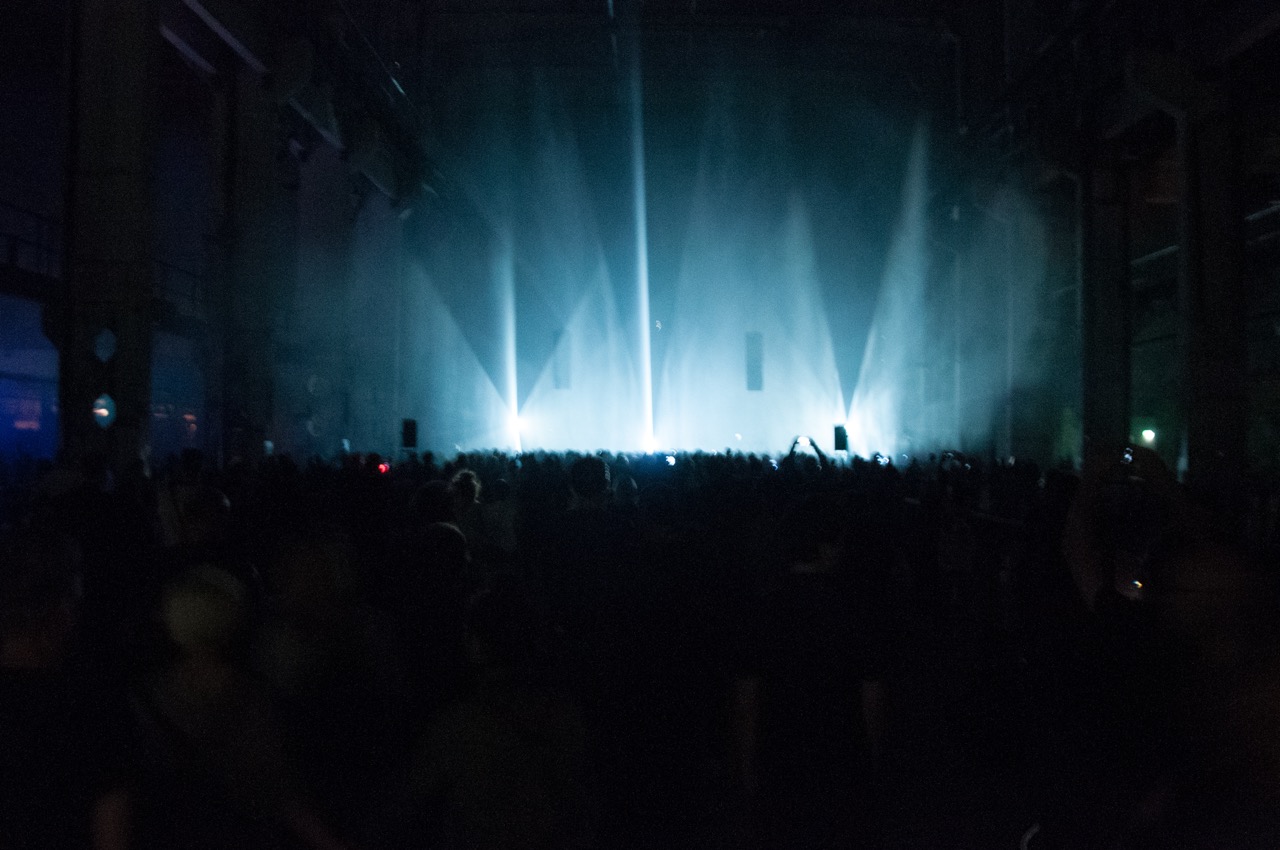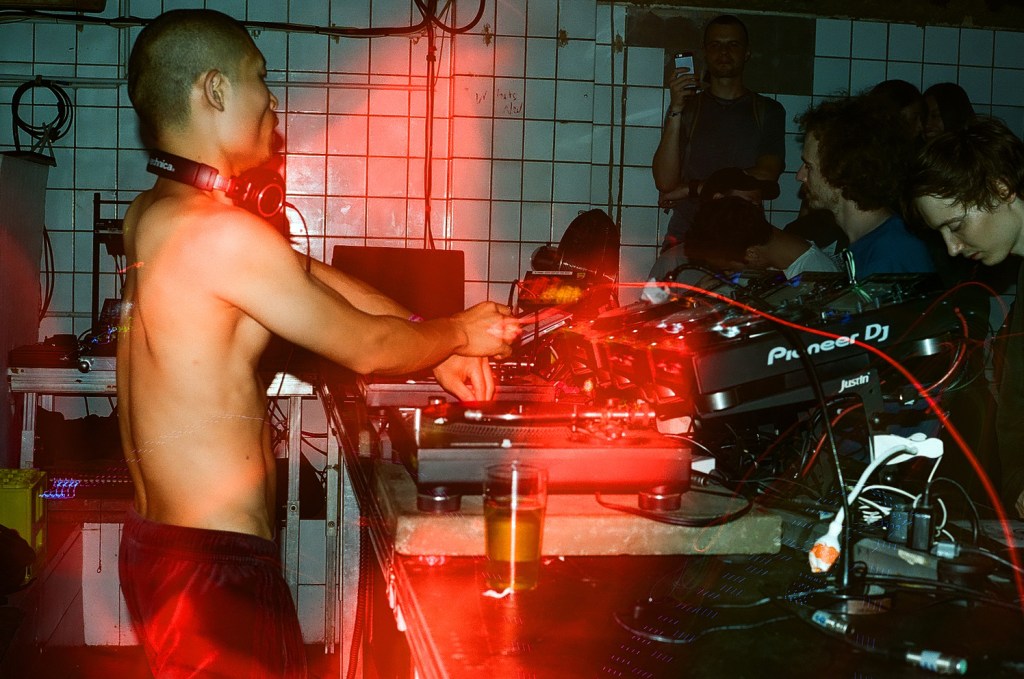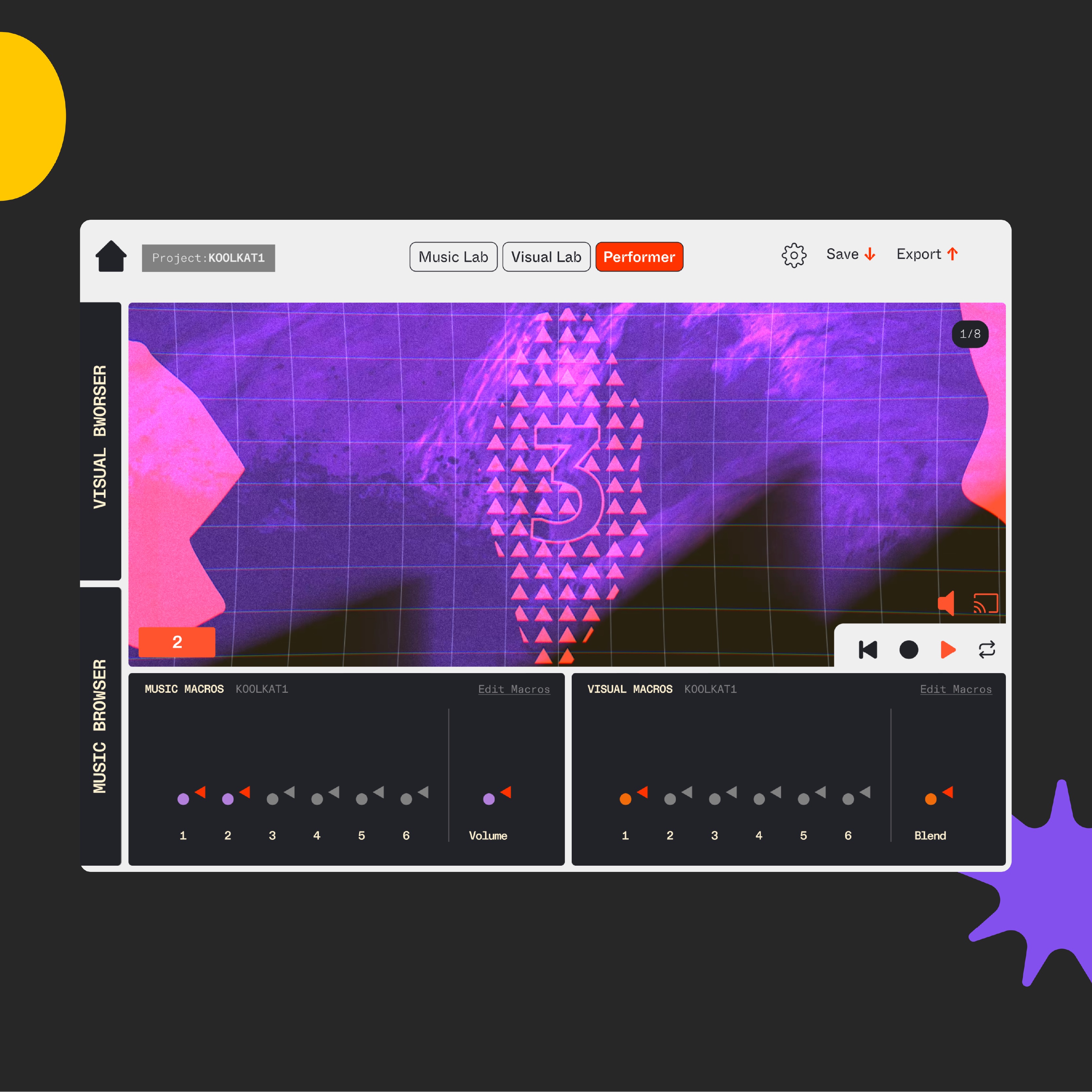
Atonal Playground
UX & UI
/
/
a creative platform inspired by Berlin Atonal — designed for anyone to explore, play, and create audiovisual art.
Atonal Playground is a UX/UI design project developed with Eshed shalev during our third year in the Visual Communication program at Holon institute of technology.
The brief asked us to design a complex interface or dashboard that solves a clear need for a specific user group.
We chose Atonal Playground, an experimental electronic music and arts festival in Berlin known for its bold, avant-garde identity and global audience in their 20s.
Inspired by the festival’s spirit of openness, play, and creative exploration, we designed a digital platform for music and visual creators — from beginners to experienced artists.
The Challenge
Turning Complexity Into Play: A Creative Tool Anyone Can Use.
Designing an intuitive creative platform that supports both newcomers and experienced creators, while preserving a sense of edginess and experimentation throughout the experience, preserving the spirit of the festival.
Research
What We Learned From Real Creators.
As part of our preliminary research, we interviewed an electronic music producer, a motion designer, and a frequent festival attendee. Their perspectives helped us refine the concept and make several key decisions for the interface.
Demand for a unified creative environment
Interviewees expressed strong interest in a platform that allows music creation and visual creation under one roof — as long as the interface remains intuitive and beginner-friendly.
The need for speed in early creative stages
the participants from creative fields highlighted the importance of fast, frictionless workflows in the initial phases of creation, where momentum is crucial for overcoming creative blocks.
Complexity as a barrier to entry
Existing tools for electronic music production and motion graphics were described as overly complex — both technically and in terms of onboarding. For many users, the steep learning curve discourages experimentation and makes the first steps into these fields unnecessarily difficult.
Design Concept
Play first,
complexity second.
The festival is all about electronic music and different kinds of art, its about experimentation and being a safe place for people to enjoy and experience. Based on what we learned about the festival, its history, reputation and the people that visit, we decided to design a platform for visual and musical creators (but also people that are new to the fields). the platform allow the users to simply create a music track, a video art piece and combining them together. we decided to go with the approach of letting the user first play around, and hide the complexity second in hierarchy in order to keep things simple, while also allowing the experienced users to enjoy.
App Architecture
Balancing simplicity and complexity.
from the research phase we went on a few iterations of the app's architecture, finding the right balance between must have's and nice to haves. refining what features, sections and interactions are necessary for each of our users — beginners, pros and casual explorers.


Wireframing
Experimenting with different layouts and levels of abstractions, slowly but surely arriving at our final design.
Final Design
Compose, Create, Perform.
The final app included 3 main screens, with multiple views for each of them. music lab is where a user can play and experiment with music intuitively with an interface built around basic shapes and colors, and features borrowed from physical musical instruments, like a step sequencer. the visual lab is where you generate, mix and compose video pieces. perform is where a user can combine the two worlds and play live music along their visuals.
Each screen is built around the play first, complexity later design approach we initially planned, with an interface inviting play and experimentation — but with extra layers of control and fine-tuning if desired.










